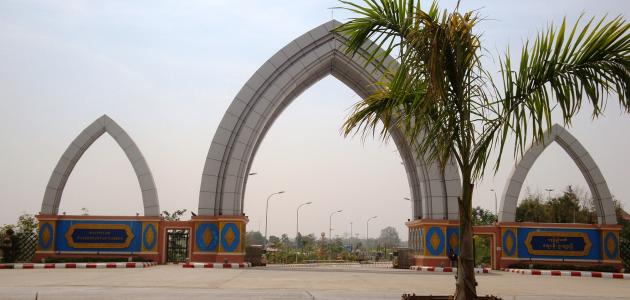Table of Contents
Northern Mariana Islands
The Northern Mariana Islands are known in the English language as the term (Northern Mariana Islands), which is a group of coastal islands, and it is officially known as the Commonwealth of the Northern Mariana Islands. The English language is the official language, with a group of local languages spoken among groups of the population, such as: the Carolina language.
History of the Northern Mariana Islands
Historical research indicates that the population presence in the northern Mariana Islands dates back to 4000 BC, and was the first of its inhabitants from a tribe called the Chamorros, who built a distinctive architectural civilization in Mariana, whose remains are still present until this time, and in 1521 AD Spain decided It was officially announced that the Northern Mariana Islands were affiliated with it, and several Spanish ships traveled to Mariana to gain control of it.
The indigenous people of the islands faced many problems with the Spanish occupiers, the most important of which was their cultural incompatibility, due to the difference in customs and traditions between them, and the islanders maintained work in fishing as a means to secure their livelihood and their daily food, and with the passage of time the indigenous people mixed with the Spanish, and this led to the emergence of residents New to the islands, but many settlers came from the Philippines, and Caroline, based on agreements with the Spanish government to promote settlement in the northern Mariana Islands.
In the seventeenth century AD, with the increasing prevalence of missionary calls for Catholic Christianity, many of the inhabitants of Mariana converted from folk religions to Christianity, and this contributed to the increase of Spanish control, which continued until 1898 AD when the Spanish-American War took place, in which Spain was defeated, and it was officially declared It ceded control of the northern Mariana Islands, ceding it to the United States of America.
After the end of World War II, the United States of America was able to maintain the political administration of the Northern Mariana Islands, and relied on United Nations resolutions that strengthened the American guardianship of Mariana, but a local government decided in the Northern Mariana Islands in 1969 to announce a popular referendum in order to obtain Independence from America, but this referendum led to the establishment of a local administration for the island, while maintaining American rule for it, and in 1972 AD the local administration signed in the northern Mariana Islands with the American government an agreement that contributed to the establishment of the Commonwealth of Political Union of Northern Mariana Islands.
Geography of the Northern Mariana Islands
The Northern Mariana Islands contain a coastal region consisting of coral reefs, and many types of fish, as there are clusters of volcanic mountain heights, and some volcanoes are still active in some northern Mariana Islands, and the land area of the islands is approximately 475,260 km², and is characterized by its tropical climate with Easterly monsoons, and specific precipitation amounts.
Public life in the Northern Mariana Islands
The origins of most of the inhabitants of the northern Mariana Islands belong to the indigenous tribes, mixed groups of Spaniards, Asians, and others, and the population of the islands reaches approximately 54 thousand people, and the islands contain many public schools, which contribute to providing education to students at all levels of school, As for the prevailing popular culture, it is a mixture of indigenous customs and traditions with Spanish and American culture.








